#BatWeek2020
Text
Bat Week: Meet Our Bats!
Happy #BatWeek! Did you know that nine species of bat have been found in Glacier? Let's meet them!
1. Long-eared myotis (Myotis evotis): Named for its notably long ears, this bat is found all across Montana in suitable habitat and consumes enormous quantities of insects nightly.

Photo: USFWS Mountain-Prairie
[alt text: Gloved hand holds a small brown bat with long ears]
2. Little brown myotis (Myotis lucifugus): Also known as Little Brown Bat (LBB), it’s especially skilled at hunting in swarms of small insects. LBBs often catch prey with the tip of their wing before transferring it to their mouth!

Photo: NPS/Dylan Schneider
[alt text: A bat with outstretched wings flies off the gloved hand of a researcher]
3. Long-legged myotis (Myotis volans): These western bats prefer mountain forests. They can detect prey from relatively long distances in open spaces, but also hunt well in cluttered habitats like forest canopies.
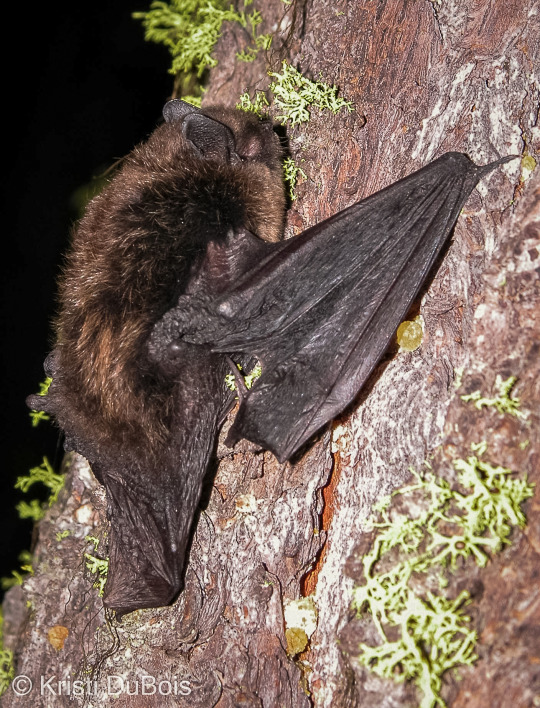
Photo: Kristi DuBois
[alt text: A medium-sized dark brown bat with long legs on a tree trunk]
4. Big brown bat (Eptesicus fuscus): Studies of big brown bat feeding habits have shown that they eat significant amounts of crop and forest pests, like scarab beetles and cucumber beetles.
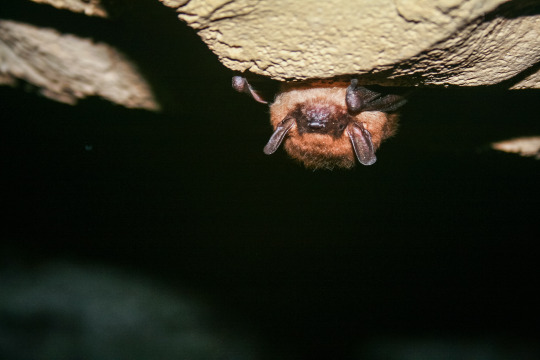
Photo: USFWS/Ann Froschauer
[alt text: A fuzzy brown bat hangs upside down in a cave]
5. Silver-haired bat (Lasionycteris noctivagans): These bats prefer roosting on or within trees, especially in old-growth forests. Their relatively slow flight distinguishes them from other species of bat.

Photo: Kristi DuBois
[alt text: A brown bat with silver-tipped fur crawls up a tree]
6. California myotis (Myotis californicus): These bats are among North America’s smallest, enabling them to feed on especially tiny insect prey. It was not until miniature radio-transmitters weighing less than half a gram were developed that these bats could be tracked!

Photo: Katie Smith, Golden Gate National Parks Conservancy
[alt text: Gloved hands hold a tiny golden-brown bat]
7. Eastern red bat (Lasiurus borealis): North America’s most abundant ‘tree bat.’ Unlike most bats, Eastern red bats often give birth to twins, and can have litters of up to five young!
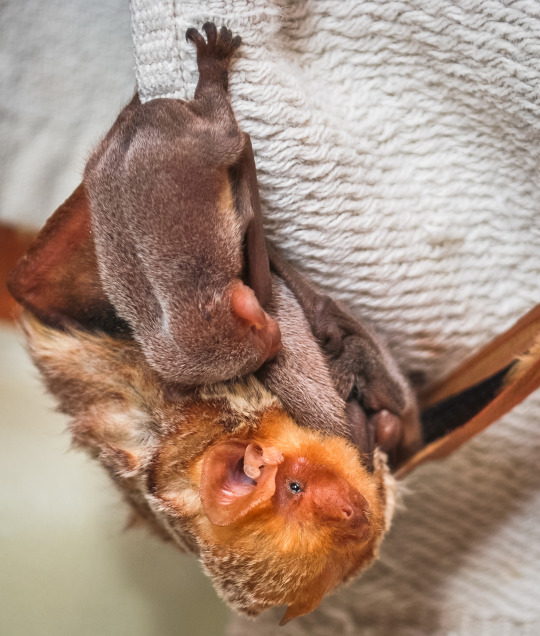
Photo: Josh Henderson
[alt text: A strikingly orange-colored bat with a small baby clinging to it]
8. Hoary bat (Lasiurus cinereus): Hoary bats are easily distinguishable from other species by their fur’s frosty appearance. Glacier may be one of the most substantial migratory routes for hoary bats across the continent!
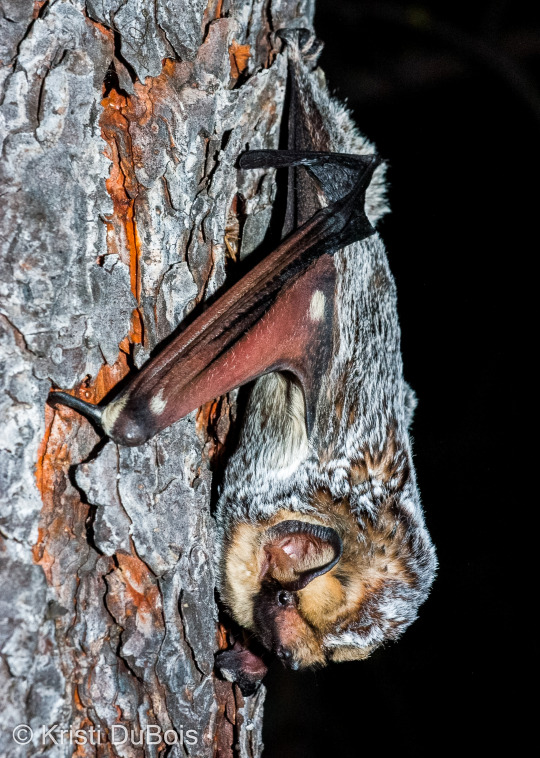
Photo: Kristi DuBois
[alt text: A bat with distinctive frosty-looking fur clings to craggy tree bark]
9. Yuma myotis (Myotis yumanensis): These bats are more closely associated with water than most other North American bats. They can be very difficult to distinguish from little brown bats – one way to tell is by their echolocation calls, which occur at a higher frequency.
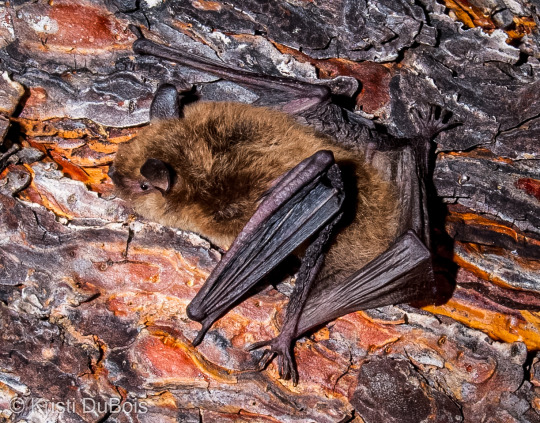
Photo: Kristi DuBois
[alt text: A furry brown bat with mouselike appearance clings to tree bark]
Learn even more: https://www.nps.gov/articles/bats-brief.htm
26 notes
·
View notes